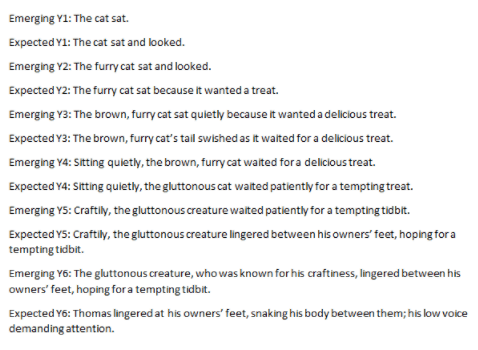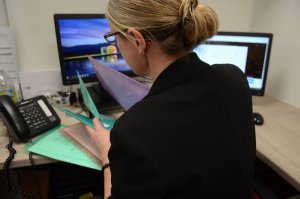We’re now more than a year into the pandemic and the most disruptive period in education since the Second World War. There does seem to be light at the end of the tunnel, with the national picture improving and restrictions being gradually reduced. Whilst we cannot know for certain when the pandemic will end, we do need to begin to look to the future. Significant events, whether national or international, have always provided an opportunity for reflection, and this situation is no different. At the start of the pandemic, when everything felt like it was in disarray, getting through each day was our main priority. But now, with us all to differing extents, ‘used to’ the situation we find ourselves in, we can begin to consider the future in education. The pandemic has shone a light on our collective strengths and weaknesses and, as a profession, we need to capitalise on the lessons we’ve learned whilst looking to the future.
The government’s aim is to ‘Build Back Better’ but how can we do this in school? What lessons have we learned? What do our children really need? The answer to all of these questions will depend on your school’s context and, as a school, you will need to take the time to reflect on your situation.
- As a staff team you may want to start the process of looking forward by having a ‘big conversation’ about the last year. Encourage all staff to participate and consider as a school:
- What has made you most proud?
- What has the pandemic shone a light on, both positive and negative?
- What has surprised you? What can you learn from it?
- Which new ways of working would you keep? Why?
- What would you rather forget? Why?
And the most important question:
- What are your priorities, as a school, for the children?
Once you’ve started your ‘big conversation’ and gathered key themes, you need to ask ‘what next?’ Using your findings from the ‘big conversation’ you will need to prioritise and create a plan. Some schools have appointed a steering committee involving staff, parents and the community, to champion learning from the pandemic. Others have made it a school development priority and it has taken precedence within the school’s development plan and subsequent subject lead plans. However your school chooses to move forward, just having the conversation is not enough; taking the themes forward and using them to support your development is key.
As with all school development planning, the next steps will be to implement plans and review the impact of these changes. This is also the opportunity to be brave, to make those decisions where you feel a change is needed and to try different approaches. If we have learnt anything over the past year, it has to be that as a profession we are awesome at changing, adapting, and making education the best it possibly can be for our children. Revisit the ‘big conversation’ and the ‘what next?’ as you progress through the implementation and evaluate the impact.
We’re lucky enough to work with schools all around the country, each with their own very different circumstances. We have been having our own ‘big conversations’ and have identified three key themes that we want to take forward in our own practice. These may mirror discussions in your own school and provide some food for thought when thinking about your next steps.
The importance of securing foundational learning
There’s much talk at the moment about children’s gaps, learning loss and catch up. Whilst the disruption caused by the pandemic has undoubtedly led to these gaps, a deeper look at the picture is needed. In many schools, key foundational aspects of leaning are where those gaps are appearing. In writing, we have children who can punctuate speech, use complex vocabulary and write in a range of styles and genres, but who cannot formulate sentences correctly. In reading, we have children who can discuss the merits of texts, explain their understanding and make links between their reading, but who cannot fluently read texts aloud. The same picture is true across the curriculum – in our experience, it seems to be those foundational aspects of learning which have been hardest hit. Why?
If we’re really honest, it appears that these gaps were always there. They may not have been explicit for as many children, but with the disruption of the pandemic, the areas of the curriculum where children were not as secure as we thought, have come to the fore. With missed learning opportunities, less modelling and less practise over the past year, those concepts which looked secure turned out not to be. And unfortunately, they are invariably the foundational concepts needed on which everything else builds. It isn’t that these concepts weren’t taught, nor that they weren’t taught well, but that they weren’t secured sufficiently. So what can we do to ensure concepts are learned deeply so that come what may, the knowledge sticks?
Make links
Consider where and when you can make curriculum links clear to children. By making these links explicit, we can build and extend children’s schema so that learning is easier to access. Think about how you can build links across the curriculum to background knowledge and prior reading in your Reading sessions. You could use a pre-read session to explore this, as detailed in our blog on the Reading Gems Guided Reading approach. How can you link back and forward in your History curriculum? Can you choose some texts to make links between different subject areas?
Prioritise understanding
We all know the curriculum is jam-packed and it is difficult to cover everything in as much detail as we would wish. But sometimes, this means we focus too much on getting through content, rather than developing understanding. With English for instance, we sometimes focus too much on labelling and spag-spotting when teaching grammar. By this, I mean that our approach may be to tell children what the new SPAG concept is, ask children to find the concept in a piece of text and then encourage them to try to use it. A good example of this is ‘capital letters and full stops’. What we need to do more of, in my view, is build real understanding. Children need to be taught the role and the effect of different concepts, then have a go at investigating them, finding patterns and building understanding of how language works. This way, they can apply their learning to all sorts of different situations. If instead of focusing on ‘capital letters and full stops’ we put time into building children’s sentence understanding, children would be far more secure in not only sentence demarcation, but also how to use different sentence types for effect.

Build in retrieval practice
Consider how you can build in retrieval practice into the different areas of your curriculum. You may already use exit slips or quizzes to check pupils’ understanding and retention, but how can you continue to build on this to check on learning from further back in time? One way is to use the ‘last lesson’, ‘last week’, ‘last term’ and ‘last year’ concept where children have a go at using a key concept from each of those points. You can repurpose the prompts to suit your needs, e.g. ‘In Year 1’ so that you can quickly and efficiently check children’s understanding, focusing in on specific concepts if needed.
- Review and recap
Consider how often foundational learning is reviewed and recapped. How often do we go over the basics and use this as a springboard for applying new concepts? One great way to do this with sentence structure, is to have a school sentence progression. Put simply, the school starts with a sentence and builds on it to showcase a typical sentence for each year group. Here’s an example completed with Bridgelea Primary School:

As a school, each year every class can begin by reviewing and recapping their knowledge by exploring each sentence in turn from the previous years. Then, when new concepts are introduced, they can be introduced in part using that initial sentence, therefore building their understanding of what that concept does and the effect it has. This way, pupils are constantly recapping and reviewing their sentence learning and it is a great prompt for teachers too!
This approach of revisiting can be used in similar ways across the curriculum. Some schools are using memory walls to revisit learning for that week or that term, and then creating memory books which can be passed up the school so pupils can revisit their learning and identify when new learning relates to that taught previously. This can help children with their cognitive load and with moving learning from episodic to sematic memory. For more information visit our previous blog on curriculum progression which explores this further. A memory book could be a great tool for recording any ‘in the moment’ planning with EYFS or when learning takes a different direction to what is on the progression grids in later years, due to responding to children’s needs and interests.
We’ll be exploring best practice in securing learning and much more at our EYFS, KS1 and KS2 Networks this month. To find out more or to book a place on any of our networks, please visit our Training Courses page.
The impact of diagnostic assessment
Many schools have altered their assessment practices during the pandemic. In some schools fewer assessments have been completed, in others, there may have been more, but what has united us all is the fact that we have used assessments more purposefully than we have done so previously. It is always good practice to ensure assessments provide useful information and directly impact learning, but sometimes this can get lost. The global need to understand the impact of the pandemic and how best to support pupils to succeed has refocused assessment on the specifics. More schools are now moving towards a system of more diagnostic assessment, rather than just using assessment to identify standards. So, how can we continue to build on this?
- Make sure your assessments are fit for purpose
Consider what exactly you want to assess and what information you need from your assessments. For instance, a holistic approach to reading assessment would not only focus on a reading comprehension paper, but might also bring in assessing pupils’ attitudes to reading; book talk; fluency and decoding. - Give sufficient time for gap analysis
A good assessment is only worth the time you give to understanding it. Making sure staff have time to really analyse the picture in their class, both for groups and individual pupils will support them to identify clear next steps which are more likely to impact learning. - Try to ‘zone in’ on key concepts
Use your monitoring or previous assessment to identify key areas that need unpicking. For example, you may have noticed that number fluency is an area of need across school. If that is the case, focusing gap analysis and next steps in on this area, may be a better use of time than trying to cover every area of Mathematics in less detail. - Use what you learn
Ensure staff understand the importance of using the outcomes of the diagnostic assessment immediately to impact learning. Ask them: how are you going to use the information in your next lesson, in the next week, in the next half term, in interventions? Build in monitoring to measure the impact on pupils’ progress.
Our earlier blog on diagnostic assessment explores the subject in more detail and includes some handy free resources to support you to run impactful diagnostic assessment in your school.
Despite the fact that statutory assessment for KS1 and KS2 is cancelled this academic year, it is even more important than usual for assessments to be accurate. Effective assessment, particularly at the end of each key stage, supports transition and can provide a clear way forward for teaching in the new academic year. With this in mind, we have refocused our popular moderation courses to facilitate a wider discussion on assessment in Year 2 and Year 6. The sessions will explore best practice in the assessment of all strands of English, with delegates able to discuss their pupils’ outcomes with their peers and an experienced moderator. To book a place on the Assessment in Year 2 or Assessment in Year 6 sessions, please visit our Training Courses page.
The widening of professional development opportunities
One very welcome change has been the fact that professional development is now available in so many different formats. Not only does this mean that we can all engage much more easily with settings further afield, it also allows us to hear from a much wider range of voices. It is also often more affordable and saves time, with no travel time needed. Offering remote training and support now means more schools can access our and others’ expertise and we are thrilled to be supporting schools both nationally and internationally. We’re sure that many schools will continue to engage with some remote professional development in the post-pandemic world, but what does the research say about best practice? The EEF evidence review on Remote Professional Development (2020) is a useful document for schools to unpick when exploring their own approach to remote professional development. It found that:
- Professional development can be supported effectively remotely, with benefits such as building a sense of community whilst maintaining social distancing, lower costs and travel time.
- Remote coaching, mentoring and expert support can be effective alone or as part of broader professional development programmes, reducing professional isolation.
- The use of video can enhance remote professional development, enabling staff to review their own and others’ practice.
- Interactive content and opportunities for collaboration hold promise for remote professional development, with spaced content and collective reflection improving outcomes.
- Remote professional development requires supportive school conditions.
Many schools have already built this good practice into their own in-house training, with staff involvement in professional development actively increasing over the pandemic. We too have used these principles when designing our own training and support, building in additional collaboration opportunities, gap tasks and video review into our approach. We’re looking forward to spending some time in the Summer term recording our most popular training sessions to enable schools to choose between a wide range of methods of delivery. If you are keen for your setting to continue to use some remote professional development in the future, then using the EEF review to guide your approach is a great start.
Education is ever changing and we have a golden opportunity here to learn from the pandemic, building back better and stronger. So have your school’s ‘big conversation’ and see where it takes you. Let us know what you find out from your reflection on our Twitter account @OEedDevelopment. If you identify any areas of need for which you need support, please get in touch with us on our website or by emailing laura.lodge@oneeducation.co.uk.
















